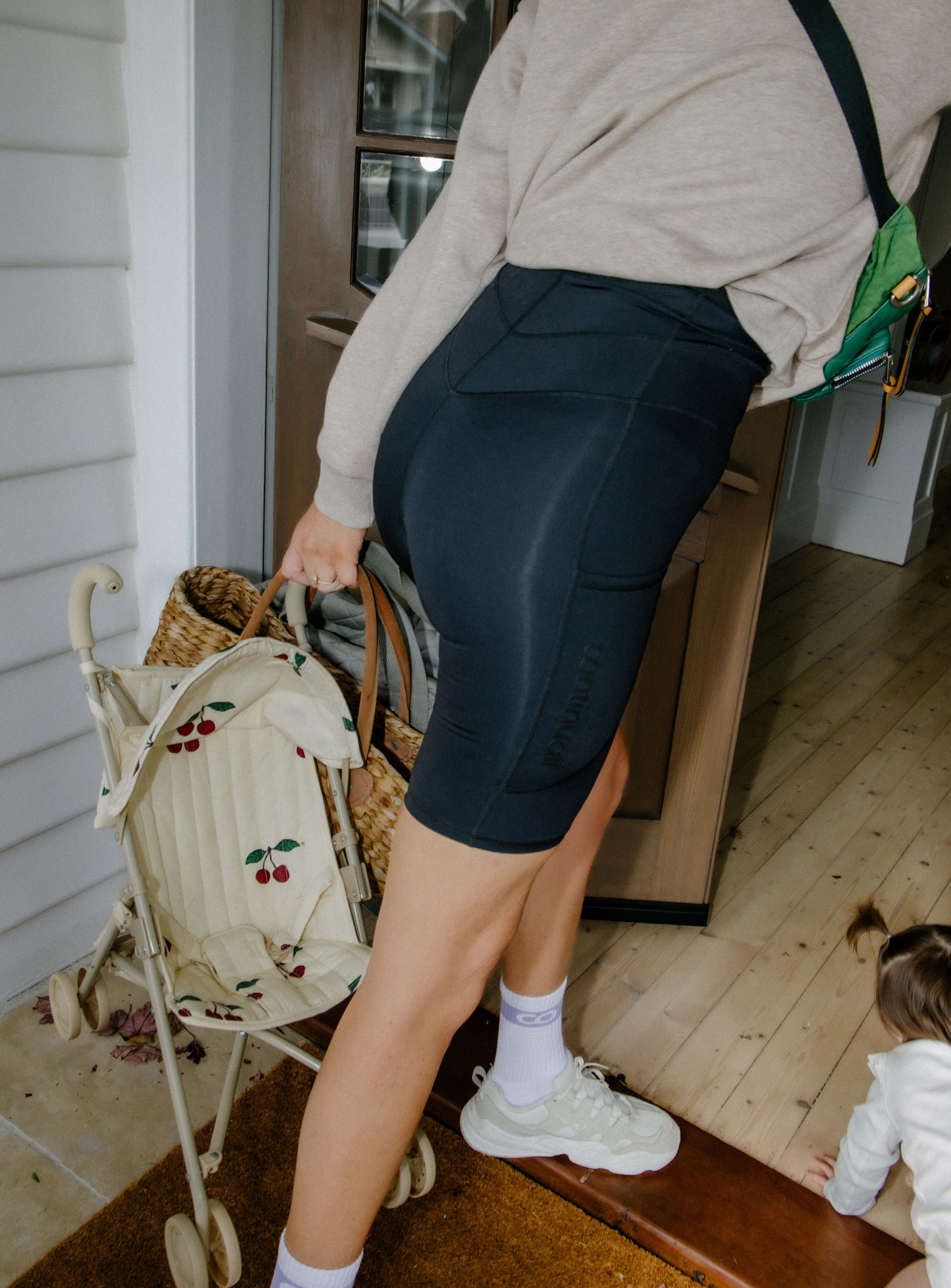In the days and weeks after giving birth to my son, my body seemed to evolve on a daily basis — deflating, shrinking, discarding and engorging to a rock-hard double-D decolletage. While in pregnancy, I cursed any waistband that pulled to tightly on my belly, in postpartum I wanted to be held by my clothes. I wanted them to keep me together, literally. After a few days of failed attempts to dress myself comfortably, I pulled on the postpartum recovery tights I’d bought in pregnancy (and promptly forgot) did what I needed. While initially, rather comical to get on, they provided the feeling of support I wanted, but they were also doing so much to assist in my body repairing from birth, surgery (I’d had a C-section), and the world’s most intense endurance test, surgery. "[In] postpartum, blood flow is your body's natural repair system. Compression that is supportive but not overbearing allows recovery to happen faster and safer," says Dr Daniela Aiello, Osteopath and cp-founder of Continuall which creates compression garments for pregnancy and postpartum. Ahead, all the ways postpartum tights are aiding your postpartum recovery and when to wear them.
Putting your abs back together
Postpartum tights offer gentle, targeted compression across the abdomen, which encourages healthy blood flow to fatigued or separated muscles (hello, ab separation). That blood flow delivers oxygen and nutrients essential for healing and tissue repair, helping your body do what it needs to do. The support also promotes better posture — particularly useful when lifting, feeding, or carrying your baby — which protects your core from overloading while it's still recovering.
Pelvic floor recovery
Good posture is everything when it comes to pelvic floor healing, and postpartum tights are designed to support your alignment and reduce downward pressure. Unlike many tight-fitting garments that can create uncomfortable pressure on your abdomen (and in turn, your pelvic floor), these are made to avoid exactly that. They’re also built with a breathable mesh gusset — a small but important detail, especially in those first six weeks while your uterus is contracting and everything below is still settling.
Dealing with fluid retention
It’s completely normal to experience swelling after birth — especially in your legs and ankles — and postpartum tights can help. The graduated compression through the legs gently encourages fluid to move up and out of the lower limbs, reducing that heavy, puffy feeling. It’s especially helpful in those early days after both vaginal and C-section births, when your body is still working hard to rebalance and release all that excess fluid.
C-section recovery
If you’ve had a C-section, comfort around the incision site is key. Postpartum tights are thoughtfully designed with seams placed well above the scar line, so there’s no rubbing or irritation over sensitive healing skin. They also provide gentle compression to support blood flow and healing, without putting pressure on the area — helping your body recover without aggravating the scar.
Vaginal birth recovery
After a vaginal birth, your body is recalibrating — and that includes your core and pelvic floor. Compression tights can help stabilise the pelvis and support your abdominal and pelvic muscles as they slowly regain their strength and tension. It’s subtle, but you’ll feel the difference in how supported you are as you move through your day.

WHEN TO WEAR THEM
You can start wearing postpartum tights as soon as you feel ready after birth — it’s all about comfort. Research suggests that the first three to six months postpartum is the key window for abdominal recovery, and gentle compression can really help during that time. That said, many continue wearing them well beyond the newborn stage for the posture support alone — especially as your baby grows (and gets heavier to carry). As Dr Ash Bolton, Osteopath and the other co-founder of Continuall says, "Postpartum recovery doesn't have an expiry date. Wearing supportive compression as you navigate lifting, carrying, and daily life will always protect your core and pelvic floor."


































